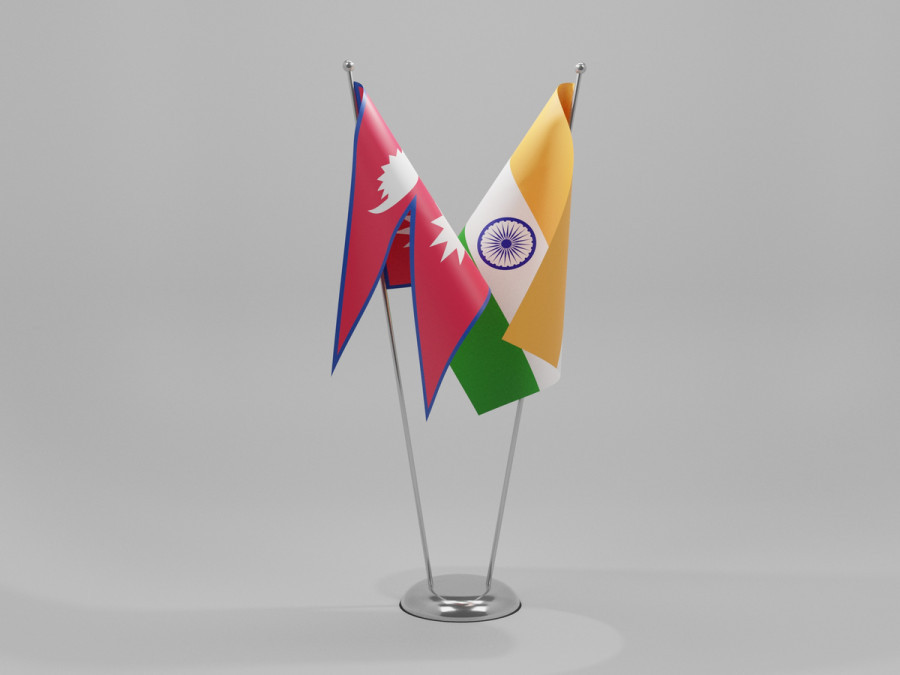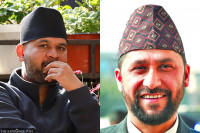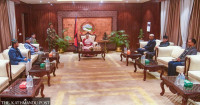Politics
Nepal, India resume dialogue, but ties far from normal, say experts
Meeting of the mechanism to assess progress made in India-funded projects takes place months after the map row.
Anil Giri
Senior officials from Nepal and India reopened formal lines of communication on Monday, months after boundary-related issues strained ties.
A discussion on the status of India-funded projects in Nepal between the two sides via video conferencing on Monday marked the first major bilateral dialogue between the two neighbours after Kathmandu released a new political map of Nepal incorporating some territories administered by India.
The resumption of formal talks between the two countries bodes well for bilateral ties, but it’s not sufficient to normalise relations or to resolve the boundary row that has persisted for decades, former foreign ministers and diplomats told the Post.
“The meeting is a positive step towards ending the deadlock, but this is not enough. It will take some more time—even months and years—to settle difficult issues such as that of the boundary,” said former ambassador to India, Lokraj Baral. “India and China are talking even in the midst of heightened tensions, so why should Nepal and India not talk ? A single issue can’t put the entire ties in a bind,” said Baral.
Relations between the two countries hit a low after Nepal published a new political map placing Kalapani, Lipulekh and Limpiyadhura within its borders in response to India's announcement of a road link via Lipulekh to Kailash Mansarovar in the Tibet Autonomous Region of China. Both Kathmandu and Delhi expressed willingness to hold dialogue on the issue, but that had not materialised.
Monday’s meeting came two day after a telephone conversation between Prime Minister Oli and his Indian counterpart.
Oli called Modi on Saturday to congratulate India on its 74th Independence Day and said, “Nepal looks forward to a meaningful cooperation between Nepal and India.”
The meeting and the telephone conversation signal that the two sides have reached an understanding that the entire gamut of bilateral ties should not be held hostage to a single issue, and that both sides have agreed to resume talks, two officials at Prime Minister Office and Ministry of Foreign Affairs told the Post.
If both sides avoid irritating each other, more meetings can take place, and finally foreign secretaries of the two countries can talk about the boundary dispute, the officials added.
The understanding was reached as Prime Minister Oli used “several back channels”— formal, informal, and even religious ones to talk to Indian officials on resumption of dialogue, Narayan Kaji Shrestha, former foreign minister and spokesperson for the ruling party told the Post. He said that talks on the boundary issue may not take place soon.
“ It took several attempts to break the jogjam. I don’t see ties with India returning to normal anytime soon,” said Shrestha. “Although official meetings are good gestures, I don’t think everything with our relations with India is on the right track.”
Monday’s meeting of the oversight mechanism, co-chaired by Foreign Secretary Shanker Das Bairagi and Indian Ambassador to Nepal Vinay Mohan Kwatra, underlined the need to expedite the implementation of the bilateral projects and agreed to undertake necessary measures to address their problems and obstacles.
Discussions were held on the status of ongoing projects under Nepal-India bilateral cooperation, the Ministry of Foreign Affairs said in a statement. Projects such as Tarai roads, cross-border railway, Arun-III Hydropower Project, petroleum pipeline and Pancheshwar Multipurpose Project were discussed during the video conference meeting, the ministry said.
Post-earthquake reconstruction, irrigation, power and transmission lines, construction of Nepal Police Academy, integrated check posts, the Ramayana circuit, motorable bridges over Mahakali River, agriculture and cultural heritage were also taken up,, according to the ministry.
Former Ambassador Baral said that the meeting indicates that ties will be normalised gradually, but Nepali leaders should tread cautiously. “It is the responsibility of Nepali to refrain from making unnecessary comments on bilateral ties that could further invite tensions,” he added.
Meanwhile, officials said not all India-funded projects are doing well in Nepal as projects such as the Arun III hydroelectric project have a dismal track record. Due to Covid pandemic, several projects are facing obstacles and might not meet their completion deadlines.
According to a study carried out by Brookings India on two India-funded projects (The East-West Postal road and the Jogbani-Biratnagar cross-border railway line), they are facing a myriad of challenges, including the acquisition of land.
The study surveyed institutional impediments and expertise deficiencies that led to years of delays in the process of land acquisition. It said, “Such issues led to protracted problems, on the ground between central, local, public, and private Nepali stakeholders, to occasional tensions in bilateral government relations, and most importantly, to significant escalation in costs to India’s public exchequer.”




 19.12°C Kathmandu
19.12°C Kathmandu


.jpg&w=200&height=120)












